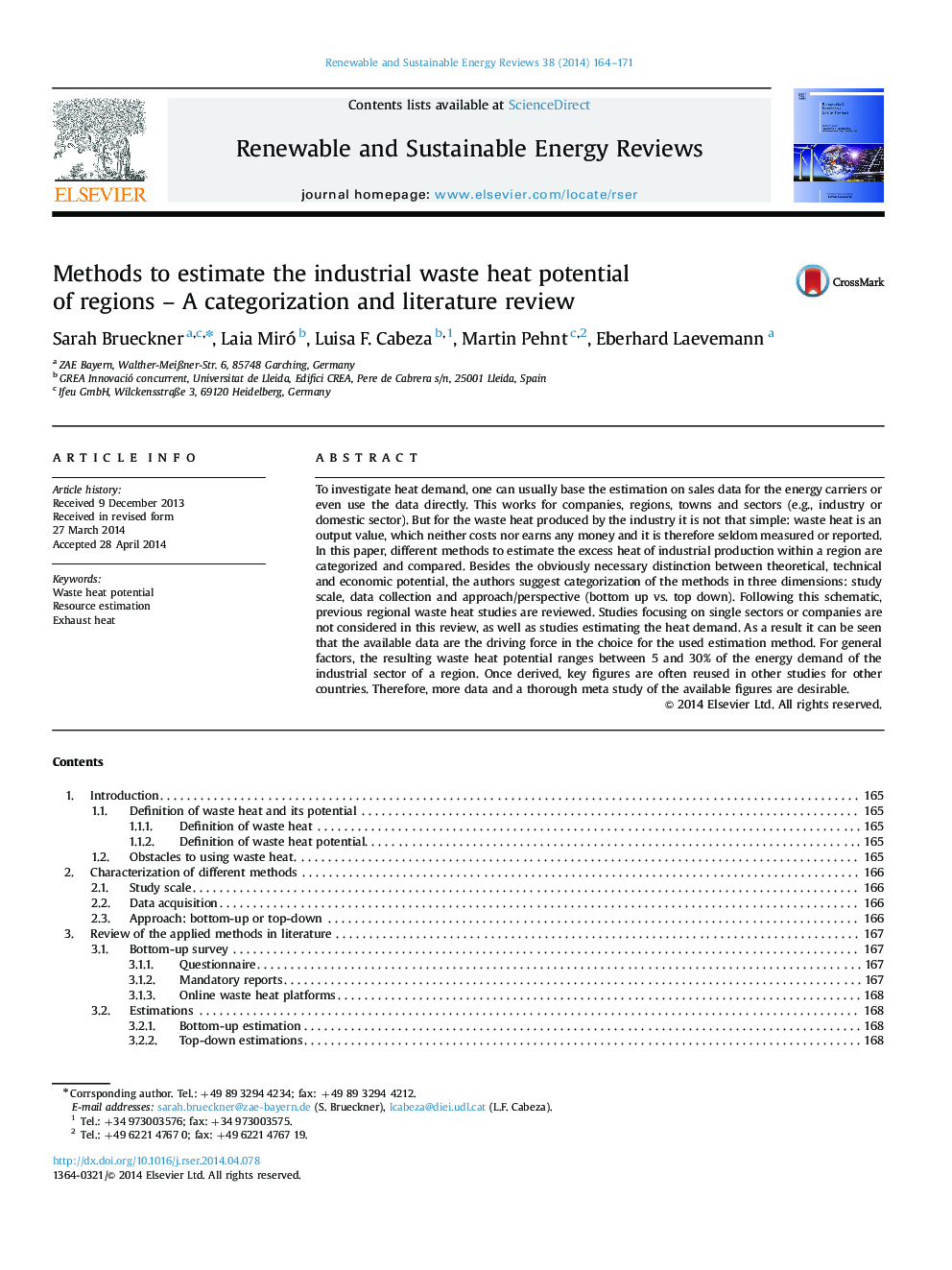| Article ID | Journal | Published Year | Pages | File Type |
|---|---|---|---|---|
| 8119442 | Renewable and Sustainable Energy Reviews | 2014 | 8 Pages |
Abstract
To investigate heat demand, one can usually base the estimation on sales data for the energy carriers or even use the data directly. This works for companies, regions, towns and sectors (e.g., industry or domestic sector). But for the waste heat produced by the industry it is not that simple: waste heat is an output value, which neither costs nor earns any money and it is therefore seldom measured or reported. In this paper, different methods to estimate the excess heat of industrial production within a region are categorized and compared. Besides the obviously necessary distinction between theoretical, technical and economic potential, the authors suggest categorization of the methods in three dimensions: study scale, data collection and approach/perspective (bottom up vs. top down). Following this schematic, previous regional waste heat studies are reviewed. Studies focusing on single sectors or companies are not considered in this review, as well as studies estimating the heat demand. As a result it can be seen that the available data are the driving force in the choice for the used estimation method. For general factors, the resulting waste heat potential ranges between 5 and 30% of the energy demand of the industrial sector of a region. Once derived, key figures are often reused in other studies for other countries. Therefore, more data and a thorough meta study of the available figures are desirable.
Keywords
Related Topics
Physical Sciences and Engineering
Energy
Renewable Energy, Sustainability and the Environment
Authors
Sarah Brueckner, Laia Miró, Luisa F. Cabeza, Martin Pehnt, Eberhard Laevemann,
